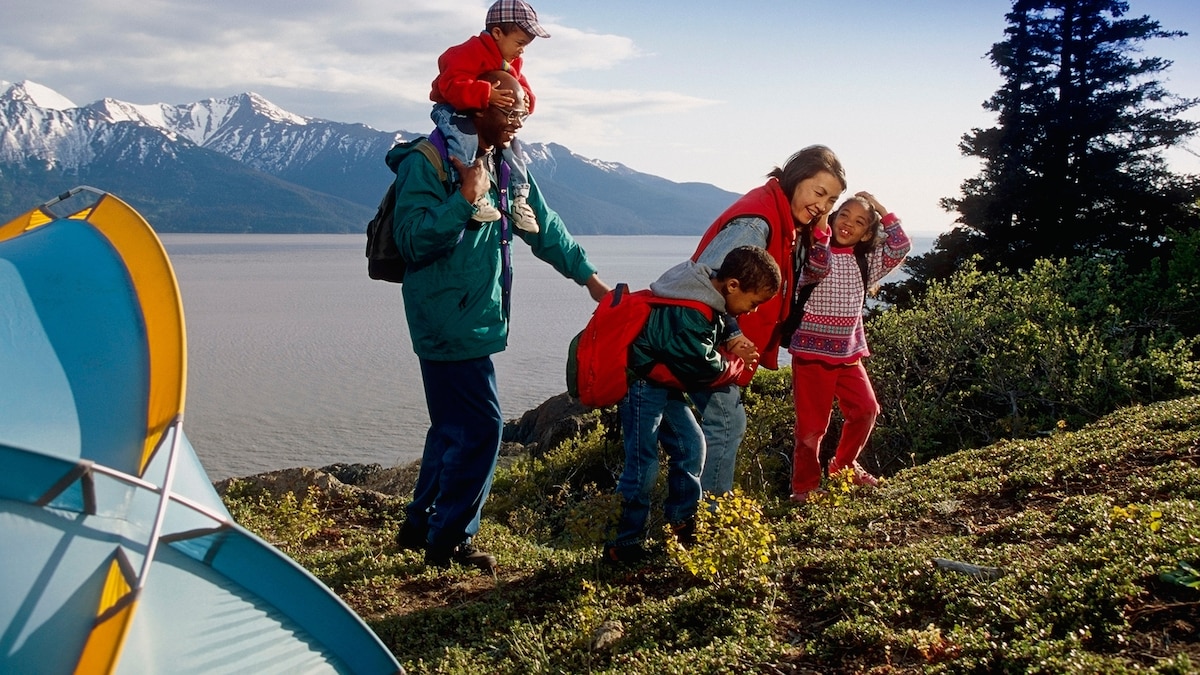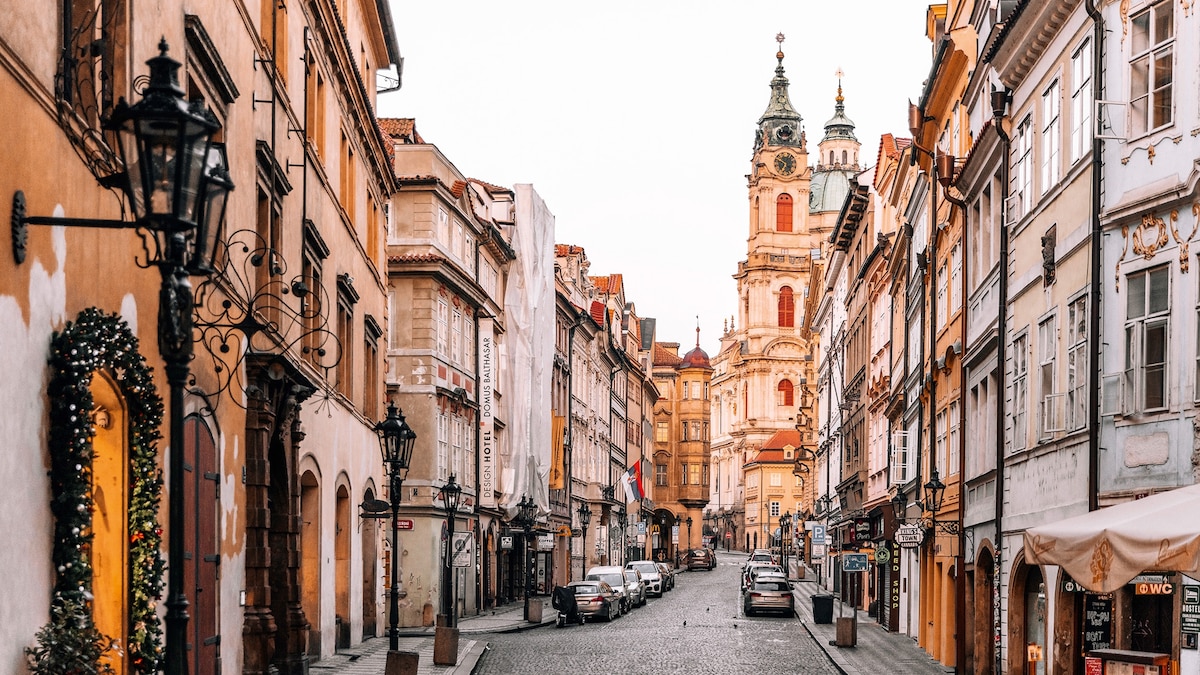Now Reading: Iffy about camping? Here’s what a guided camping trip can offer.
-
01
Iffy about camping? Here’s what a guided camping trip can offer.
Iffy about camping? Here’s what a guided camping trip can offer.

“Our family loves the outdoors. We just don’t like sleeping in it.” This is what I heard my 11-year-old daughter telling another girl on our camping trip, who had asked where else we’d been camping. The answer: Nowhere.
My family had stayed in cabins before, and some of our vacations revolved around hiking, but we usually returned to beds and showers at night. It’s not that we were nervous about sleeping in a tent—we just hadn’t been motivated to buy all the gear and figure it out.
But then my daughters, ages 11 and 15, said they wanted to try camping, and we wanted to nurture their sense of adventure. So we looked for camping options and found a guided camping, hiking, and kayaking trip for families in Wisconsin’s Apostle Islands National Lakeshore.
It was appealing for several reasons: All of us are fond of hiking, kayaking, and Lake Superior, but we’d never seen that part of it along the red rocks. Our tents would be set up on platforms, and the camp had pit toilets and outdoor showers. So we signed up for a four-day trip with Wilderness Inquiry.
When we arrived at the base camp, we met the two other families (10 kids, including ours) and our four guides. After we got situated, the guides gave us a kayaking lesson, and we headed to a nearby beach.
The guides had everybody put on wetsuits so we could get in the kayaks and practice a “wet exit”— flipping the kayak over and pulling off the spray skirt while underwater to get yourself out. The guides made it optional for the kids, but almost all of them chose to do it, and I noticed their proud smiles afterward.
Showing people that they “can try hard things and be successful is really transformative at the individual level,” says Cyri Tjaden, senior manager of extended and career programs with Wilderness Inquiry. “But I think when you see your parents try something really new and challenging, or you get to watch your kids or your siblings, it really inspires some bravery within each other, too.”
(A traveler’s guide to America’s federal lands)
Adventurous activities
The next day we hiked to a waterfall and then did some calm-water kayaking, navigating through tall grasses. Our families were mixed into different kayaks based on age, size, and experience. The guides made sure everyone was well supported in their kayaks, using bolsters and other padding to make sure the littlest kids, who were about 4 or 5, were safe and comfortable.
The following day, our kayaking was less calm, as we set out on Lake Superior across a bay to a peninsula. The windier conditions made it more of a challenge for our group to stay together, but the guides moved around to make sure no one got too far from a guide. The kids and adults were excited to paddle through a small sea cave in the red rocks, and we spotted bald eagles.
Kayaking on Lake Superior with small kids might be a no-go for many families if they didn’t have guides. But our guides made sure everyone felt safe. “Lake Superior is such a really cool, amazing place to go paddle. But it can be really dangerous, too,” says Trevor Delamater, extended adventures program manager with Wilderness Inquiry. Even when families have strong outdoor experience, it may be specific to an environment that’s different from the one they’re visiting, he points out.
And adventurous parents may be less willing to try something challenging if their kids are involved. “I think we take risks as individuals in ways that are different than we take risks as caregivers and family members,” Tjaden says. “I think knowing that this group you’re going with will include experts that are trained and have the first aid training and know what they’re doing really helps ease that anxiety and stress.”
(This Canadian kayak tour lets travelers go whale-watching at eye level)
What to eat
For parents, especially those with young kids, not having to figure out the logistics can make camping more doable. A guided trip is a way to “experience the outdoors, but in a way that is supported and takes a lot of that stress and pressure off of, ‘Well, how am I going to feed my kid for five days in the wilderness?’” Tjaden says.
On our trip, when it was time for meals, the guides would invite us to help prep and cook over a camp stove. I was surprised how many of the kids stepped up to help chop or prep without their parents’ needing to ask them to first. One dinner was chicken burritos—the kids chopped tomatoes and onions and opened the canned chicken, which the guides cooked in pans. We took water from a spigot for our handwashing and dishwashing stations, using buckets and bins.
In the evenings, the kids played tag and card games together, and they helped find sticks for campfires, where we all gathered to make s’mores.
Barriers to getting outdoors
Many barriers may prevent families who are interested in camping from doing it: The cost and hassle of buying or renting gear, hauling it, and learning how to use it; apprehension about sleeping outdoors; physical and mental disabilities and challenges; and feeling like you don’t belong.
Guided camping trips aim to make the outdoors accessible and comfortable for everyone. Guides have equipment and tools such as paddles if someone has one arm, and guide lines that they put up around camp if someone is blind, to help them get around. If a child has a disability, parents may have a hard time organizing outdoor adventures that everyone in the family can share, so they may need a little help to make it happen, Tjaden says.
According to the Outdoor Industry Association’s 2024 Outdoor Participation Trends Report, outdoor recreation participants in 2023 were 69.7 percent white, 10.3 percent Black, 13.4 percent Hispanic, and 5.3 percent Asian or Pacific Islander. For the last three groups, these percentages are lower than their proportion of the U.S. population.
Going camping with a group—especially if led by an outfitter that purposely fosters an inclusive environment—may help limit discomfort.
(A look inside the growing Black RV camping movement)
Guided camping options
- Arizona State Parks and Trails runs family campout weekends at various parks, where families learn how to set up a tent that they provide.
- National Geographic Family Journeys runs family trips in the United States and internationally, partnering with G Adventures. Currently, one of these trips—a safari in Tanzania—includes two nights in a tented camp and five nights in a lodge.
- Intrepid Travel has family trips that involve camping, including a safari in Botswana.
- The Appalachian Mountain Club’s family trips include a somewhat rigorous hut-to-hut hiking trip in New Hampshire for participants over the age of 12.
- Wildland Trekking has hiking vacations that welcome kids ages 12 and older. The company also offers private trips for families with younger children.
- MountainBased camping tours welcome families with kids 9 or older. They offer five-day tours in several national parks, including Yellowstone, Grand Teton, Yosemite, Zion, and Bryce.
Allison Torres Burtka is a freelance writer and editor based in Michigan. She writes about travel, the outdoors, sports, and health, among other topics. You can see more of her stories here.























